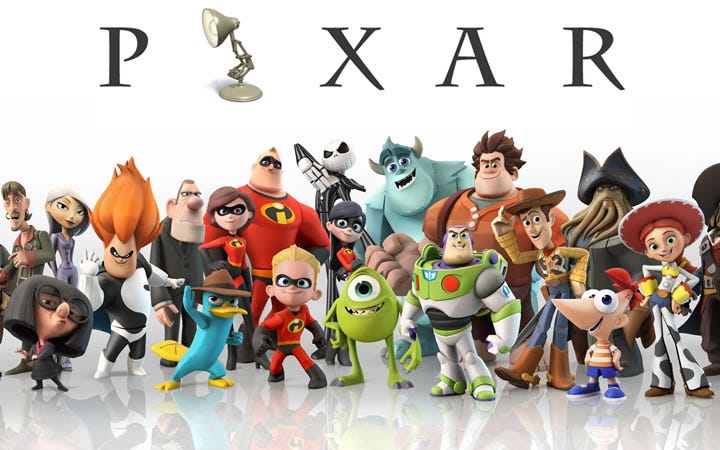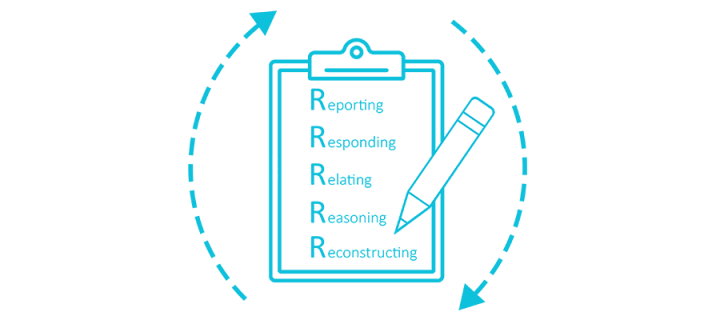As has been oft-discussed on this blog, as well as among communities of teachers since time immemorial, professional development (PD) activities are quite frequently dull, irrelevant, time-consuming, and centered around a single expert delivering one-size-fits-all content to a group of workshop attendees. This is not an effective approach to adult learning (or any learning, really), and it’s a poor approach to facilitating meaningful professional development. Higher education instructor Melissa Nicolas (2019) offers some particularly painful examples of poor PD from her own experience, which many educators can probably identify with:
- A three-hour lecture on active learning.
- An hourlong lecture on how ineffective lecturing is
- A session on student engagement citing the fact that most people only retain the first 10 minutes and last 10 minutes of any lecture, delivered via a 60-minute lecture.
- A town hall meeting that left precisely two minutes for questions.
- A workshop that began with, “Everything I am about to share is in X document, so you can just read that.”
Unfortunately, I would guess that almost all professionals who have engaged in PD, not just teachers, can recall examples of their own underwhelming, ineffective, and passive PD experiences. While instructors at all levels are asked to promote and prioritize social-emotional learning for their students, it is less common for schools to simultaneously invest in fostering a dynamic, supportive staff environment that cultivates the social and emotional competence and capacity of their teachers (CASEL, 2022).
Imagine a world where professionals are actually excited to participate in PD activities. Imagine a world where instructors feel like PD truly supports their cultural and social-emotional learning needs while simultaneously helping them do their jobs better…

I daresay it’s possible. Thus, in this investigation I’d like to take a moment to explore the lighter side of PD and highlight a few great ideas for making PD fun (that’s right…fun) and engaging for educators in all contexts.
For starters, if a PD initiative is going to be meaningful to the participants, they must have the opportunity to interact with one another and collaborate on authentic, relevant, problem-based activities (Teräs & Kartoğlu, 2017). This means that formal presentations (i.e. lectures) should occupy the smallest portion of time in a PD workshop, and student-centered activities should occupy the largest. If this is the starting place for any kind of PD initiative, there’s no need for a workshop coordinator to feel like they need to prepare anything flashy to ‘wow’ their attendees and trick them into thinking they’re having fun; prioritizing time for engagement and collaboration is the first and most important step. From there, the rest might be icing on the cake.
You’d like some recipe ideas for the icing, you say? Well allow me to share a few tips and tools which promote collaborative, active learning for adults which could potentially ‘ice’ your PD ‘cake’ beautifully.
Introduction/Icebreaker Activities
All good lesson plans have an initial entry point—a hook—that helps students engage with prior learning, share background knowledge, establish social presence, and generally get curious about the content. Adult learning is no different. Why not try incorporating some of these ideas from Ditch That Texbook (2019) to kick off your next PD gathering?
- Digital Escape Rooms – Digital escape rooms get participants collaborating immediately over a shared problem/objective in a fun way. The escape room theme can be tied into the learning objectives for the PD, or it can be a stand-alone activity which serves as an example of something to try with students. Here is a link to some free digital escape rooms to offer some initial inspiration.
- Use Flipgrid for Short Intro Videos – either some or all PD event attendees can be tapped to create short intro videos which help them introduce themselves to their colleagues. Videos can be shared to the whole group or in small groups. Fun prompts for what to share about (e.g. a hobby or a fun fact) can help colleagues connect with each other in new ways and engage on a social-emotional level.
- Use a Google Jamboard, Kahoot, Quizizz, Gimkit, Quizlet, etc. – have participants immediately engaging in a session with a starter quiz, poll, or brainstorm board based on an opening question or theme. This helps activate prior knowledge, but it also serves as an opportunity for instructors to engage with a tool they may want to use in their classrooms.
Gamification
Custom-made Jeopardy games have been used as learning activities in K-12 classrooms for decades, and I’m here to say that they still hold up. When I was a 5th grade classroom teacher (not all that long ago), Jeopardy review day was a hallowed day…even for kids who had never seen an episode of the actual gameshow. Likewise, I still remember playing Jeopardy when I was a student in my 6th grade social studies classroom many years ago (and our whole class loved it). This is the power of gamification as a tool for learning. Of course, kids aren’t the only ones who enjoy games.
“…adults love to be playful, take risks, and experiment with new ideas just as much as children do.”
(Schmidt, 2015)
So why not gamify PD for adult learners?
Carl Hooker (2015) offers an example of PD gamification through Interactive Learning Challenges (ILCs). At its core, an ILC “…starts with the concepts of collaborative problem-solving and interactive creativity and adds an element of competition to learning.” An ILC can take place over the course of several days or in one hour, and it can be done with a relatively small group of people or a very large group of several hundred. The challenges themselves can take many different forms, but Hooker (2015) describes one particularly successful activity, a scavenger hunt, which he facilitated in place of of a keynote address during a PD event. In this ILC, the goal was to help a large group of educators better leverage iPad and App use in their classrooms. He created a custom scavenger hunt activity in which educators worked in groups to complete challenges related to the learning objective. “I had the entire group line up and self-identify who was the most or least tech-savvy. After that, I paired and grouped the staff to ensure that each team of four included at least one ‘high tech’ person. The way I designed the challenges, every team member had to…participate in the creation of the final product, regardless of tech skills” (Hooker, 2015).
After the activity, participants noted that they loved being engaged with the actual tools they were meant to be using, they valued learning from/with their peers, they felt empowered to try new things in a safe, collaborative space (especially those who identified as least tech-savvy), and…drumroll please…they had fun!

Other ILC examples might include gameshow-style formats (Family Feud, Amazing Race, trivia, etc), or perhaps a STEM-style design challenge in which participants work in groups to build or create a final product given a clear goal and building constraints (Ditch That Textbook, 2019). These are, once again, activities which educators may choose to replicate or adapt for their own classroom environments.
Also, offering prizes never hurts…
EdCamps
Finally, another option for creating an engaging PD experience is trying an EdCamp format. An EdCamp is an informal, peer-led, collaborative workshop (held either face-to-face or virtually) where educators gather to share stories, experiences, lesson plans, resources, and new ideas with each other, often around a shared theme or learning objective (Schmidt, 2015). EdCamps are usually grassroots “non-conferences” in that there typically isn’t any kind of registration fee, vendors, or keynote speakers; they’re open to everyone, they’re often hosted locally, and sessions are usually led by volunteers (also workshop attendees) who are homegrown experts in their particular fields of interest (Schmidt, 2015). In other words, at an EdCamp, everyone has something to share, and everyone has something to learn.
EdCamps are a way for educators to take ownership in their own learning and simultaneously participate in something immediately relevant to their professional needs/interests. EdCamps honor the rich reservoir of background experiences and professional expertise that all adult learners bring to the table, which is key to effective adult learning. EdCamps help support and expand professional learning networks/communities and provide ‘playful’ learning environments where adult learners can take risks and experiment with new tools and ideas (Schmidt, 2015). No two EdCamps look alike, and there are endless possibilities for how to structure or format an EdCamp, making them particularly accessible, affordable, and customizable options for PD initiatives, no matter what the theme or learning objective(s) might be.
Conclusion
In short, in order to make PD ‘fun’ and engaging, coordinators should look to prioritize time for participant interaction, collaboration on problem-based activities, and opportunities to establish social presence. There are a variety of ways to do this, and introducing games or an EdCamp format are just a couple of options. No artificial gimmicks needed in order for PD to be fun, just an opportunity for professionals to learn from and with each other in a space that encourages exploration and experimentation….and did I mention that prizes never hurt?
References:
CASEL Guide to Schoolwide SEL (2022, March 1). Strengthen Adult SEL. CASEL. https://schoolguide.casel.org/focus-area-2/overview/
Ditch That Textbook (2019, August 16). 12 Engaging Activities to Rock Your Back-to-School PD. Ditch That Textbook. https://ditchthattextbook.com/12-engaging-activities-to-rock-your-back-to-school-pd/
Hooker, C. (2015, February 10). It’s Time to Make Learning Fun Again, Even for Adults. Edutopia. https://www.edutopia.org/blog/make-learning-fun-for-adults-carl-hooker
Nicolas, M. (2019, November 19). Workshops that Work. Inside Higher Ed. https://www.insidehighered.com/advice/2019/11/19/how-academe-should-improve-its-professional-development-workshops-opinion
Schmidt, P. (2015, March 20). Promoting Playful Learning Through Teacher Networks. Edutopia. https://www.edutopia.org/blog/changemakers-playful-learning-teacher-networks-philipp-schmidt
Teräs, H., & Kartoğlu, Ü. (2017). A grounded theory of professional learning in an authentic online professional development program. International Review of Research in Open and Distributed Learning, 18(7). https://doi.org/10.19173/irrodl.v18i7.2923







